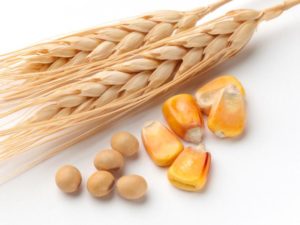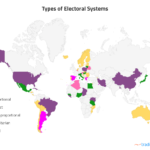 Grain futures traded higher on Wednesday as speculations arose that low prices will encourage importers to fill in stockpiles. Egypt purchased a large quantity of wheat yesterday, while China expects a shipment of corn.
Grain futures traded higher on Wednesday as speculations arose that low prices will encourage importers to fill in stockpiles. Egypt purchased a large quantity of wheat yesterday, while China expects a shipment of corn.
On the Chicago Mercantile Exchange, wheat futures for September delivery marked a new days high at $6.6988 a bushel at 9:12 GMT, up 1.77% on the day. Days low stood at $6.5813, which was the open price. Wheat has gained more than 2% so far this week after plunging 5.87% the previous one.
Wheat prices were supported as the grains largest importer, Egypt, purchased 180 000 metric tons of Ukrainian and Romanian wheat yesterday, which caused a rebound. South Koreas biggest feedmiller, Nonghyup Feed Inc., also bought wheat for delivery in October.
Tetsu Emori, a commodity fund manager at Astmax Asset Management Inc., said by phone for Bloomberg: “Importers and investors are buying on dips. Buyers are looking for raw materials and that should be supportive factors in the market.”
Wheat recorded an 8-day falling streak as a stronger dollar and ample global supply weighed on prices. The grain posted a 5.87% decline last week. In its acreage report on Friday, the U.S. Department of Agriculture said that the planted area for 2013 will equal 56.5 million acres, 1% higher than last year. The 2013 winter wheat planted area equals 42.7 million acres, 3% above last year and up 2% from the previous estimate. Wheat prices fell nearly 3% on Friday after the USDA said wheat acreage was expected to hit the four-year high of 56.53 million. Increased wheat output is expected this year from Australia, Russia and Ukraine’s Black Sea region and Europe. Prices drew some support the past couple of weeks as rains delayed crop developing in the U.S.
In its crop progress report on Monday, the USDA said that as of June 30 43% of the winter wheat crop was planted, above the preceding week’s 20%. This was however below last year’s 73% during the comparable week and also below the five-year average 52%.
As for the spring wheat crop, the USDA reported that 93% has emerged as of June 30, compared to 90% during the prior week. This was below last year’s full emergence and the five-year average of 99%.
The government agency also said the spring wheat condition was overall matching last year’s. As of last week, 5% of the crop was categorized as “Very poor” and “Poor”, 27% was “Fair” and 68% was “Good” and “Excellent”. Meanwhile in 2012, 5% was of “Very poor” and “Poor” quality, 24% was “Fair” and 71% was “Good” and “Excellent”.
Corn advances
Meanwhile, corn also advanced despite increased global production forecast. On the Chicago Board of Trade, corn futures for September delivery marked a new daily high at $5.3838 a bushel at 9:13 GMT, up 0.97% on the day. Days low was hit during the Asian session at $5.3338 a bushel. Corn marked a daily gain on Tuesday, but is still more than 1.5% lower for the week after recording a steep 17.26% fall last week.
According to Chinese state-researcher Grain.Gov.Cn, the Asian country bought three cargoes of new-crop U.S. corn. China, the worlds second-largest consumer, has purchased more than 2.8 million tons of new-crop wheat, which the U.S. will start to ship after September 1. According to the USDA, Chinas total imports are expected to stand at 7 million tons in the year starting October 1, twice more than the previous period.
The grain has lost 28% so far this year and is the second worst performer after silver in the Standard & Poor’s GSCI gauge of 24 commodities. On Friday the USDA reported that 97.4 million acres of land was sown to corn, up from last year as a response to lowest stockpiles in June since 1997. This is the highest planted acreage in the U.S. since 1936. Growers expect to harvest 89.1 million acres for grain, up 2 percent from last year.
U.S. corn output is expected to be 30% higher than last year’s crop and total 14.005 billion. Global production is also projected to be higher in the 2013-2014 season, standing at 946 million metric tons, compared to 854.5 million last year.
In its weekly crop progress report on Monday, the U.S. Department of Agriculture said that this year’s corn crop condition is a lot better than last year’s. As of June 30, only 8% of the crop was of “Very poor” and “Poor” quality, 25% was “Fair” and 67% had “Good” and “Excellent” qualities. Last year, 22% of the crop was categorized as “Very poor” and “Poor”, 30% was “Fair” and the remaining 48% fell in the “Good” and “Excellent” categories.
Soybeans gain as well
Soybeans also rose on Wednesday, marking a 0.88% daily gain by 9:10 GMT. Soybeans for August delivery stood at $14.4625, ranging between daily high and low of $14.4663 and $14.4338 respectively. The oilseed has gained 1.25% so far this week after plunging 4.17% last week and 1.66% the preceding one.
Soybeans were recently pressured by reduced demand outlook from the oilseed’s biggest consumer – China. The Asian country kept on piling negative economic data, including yesterday’s both PMI readings that generally matched projections, but were still lower than May’s figures. China also received another downward revision of its GDP growth forecast last week, this time by Goldman Sachs.
The USDA said in its report on Friday that the soybean planted area is estimated at a record high 77.7 million acres, up 1% compared to last year. Area for harvest, at 76.9 million acres, is up 1 percent from 2012 and will also be a record high, if realized.
In its weekly crop progress report on Monday, the USDA said that as of June 30 96% of the nation’s soybean crop was planted, compared to 92% during the preceding week. This however was lower than last year’s 100% and the five-year average of 98%.
The agency also said that 91% of the crop had emerged as of last week, compared to 81% during the prior one. This was lower than last year’s 99% during the comparable week and the five-year average of 94%.
As for the soybean crop condition, it is overall better than last season. As of June 30, 7% was categorized as “Very poor” and “Poor”, 26% was “Fair” and 67% was “Good” and “Excellent”. Last year, 22% of the crop fell in the “Very poor” and “Poor” categories, 33% in “Fair” and 45% was of “Good” and “Excellent” quality.





